|
|
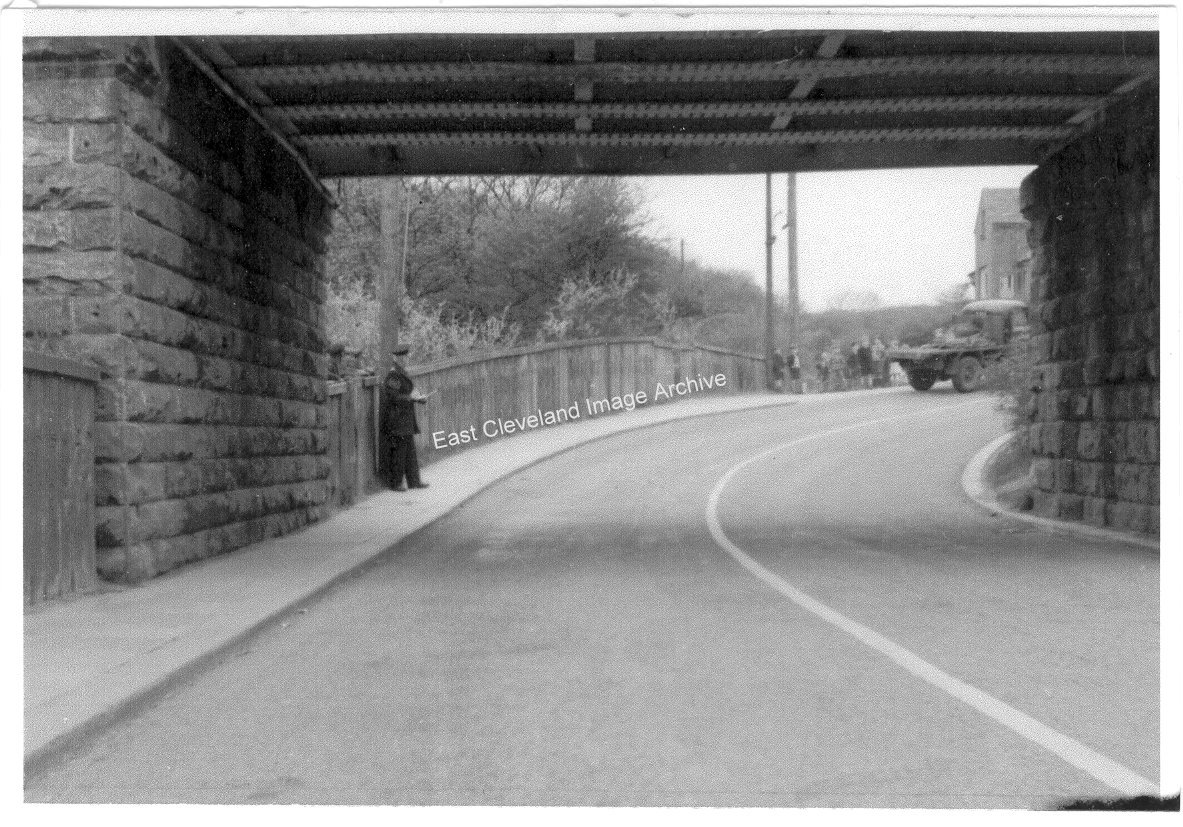
A clear photograph of the old bridge and to all those who passed underneath it the roman numerals (not in sight here) are forever remembered MDCCCLXXIV. Shirley Tutton (nee Cockerill) tells us: “I was one of those children who passed this way every day on my way to school in the early 1960s. The Roman numerals are often recalled as my point of reference to work out the answers in pub quizzes.” A new bridge now spans the road built to accommodate the freight trains from the Potash mine at Boulby.
Bryan Richardson tells us: ”I remember a cyclist being killed when he collided with a wagon at this bridge in the late 50′s. I think this photo was taken at this time which would explain the policeman stood under the bridge and the crowd of onlookers near the wagon.” Thanks to Bryan for that update.
With information now received we can give a definitive comment about this image: ”The young man that was killed was Ron Jemson, middle child of five children of Charlie and Freda Jemson of Steavenson Street, Carlin How. He was in collision with Charlie Bower’s coal lorry (this can be seen in the background of this image) under the railway bridge. Ron was only 23 years old and married for six weeks. He was cycling down to Loftus to collect his sister-in-law’s purse which had been left in a fruit shop on Station Road.”
Image courtesy of Joan Jemson, with thanks to Bryan Richardson and Shirley Tutton for the updates; especial thanks to Joan Jemson for the account.
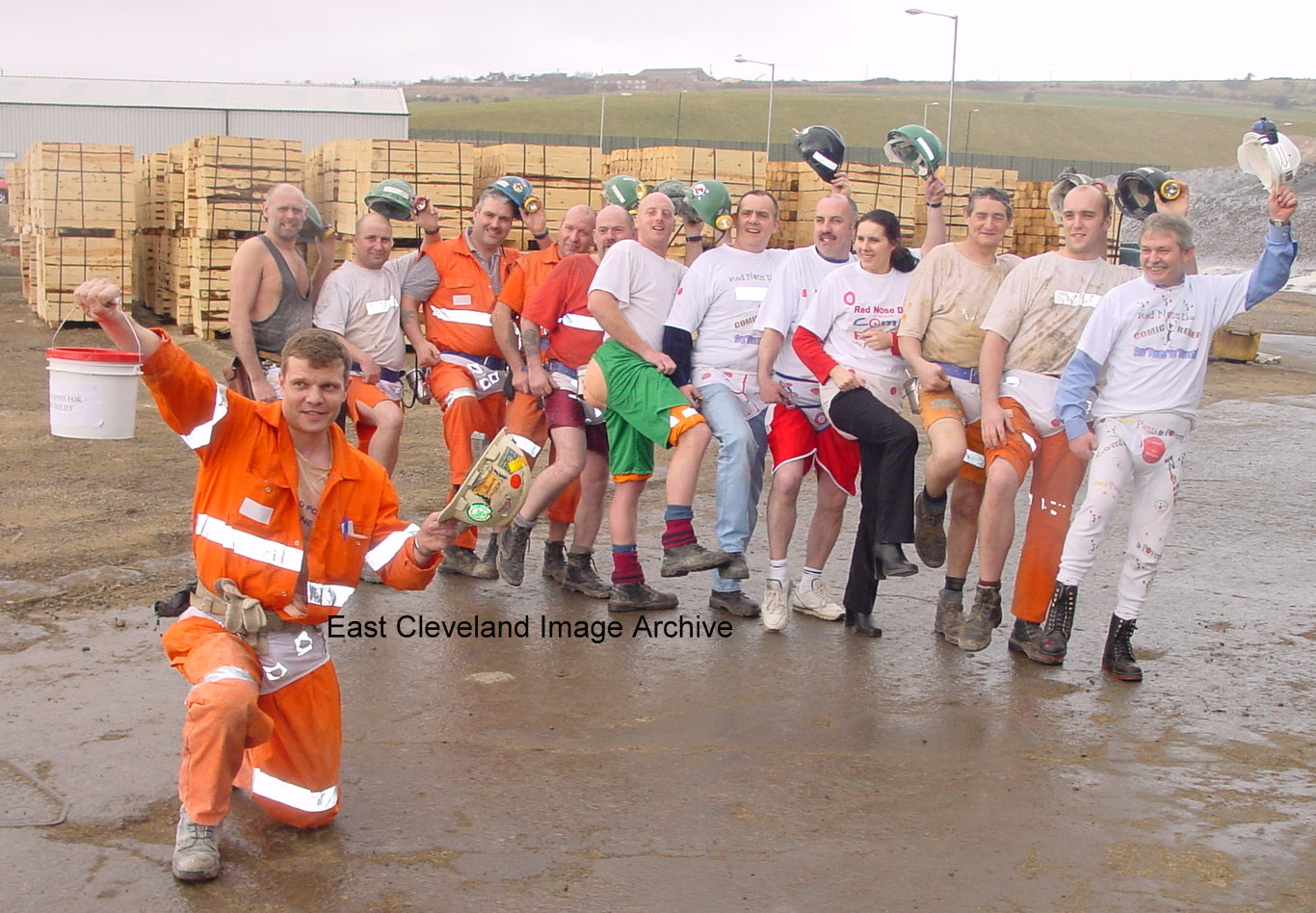
We couldn’t resist this image – you’ve gotta hand it to these guys and girl – wearing your underpants on the outside of your trousers is way cool! Employees of Cleveland Potash doing their bit for Comic Relief!
Image courtesy of Alan M Franks.
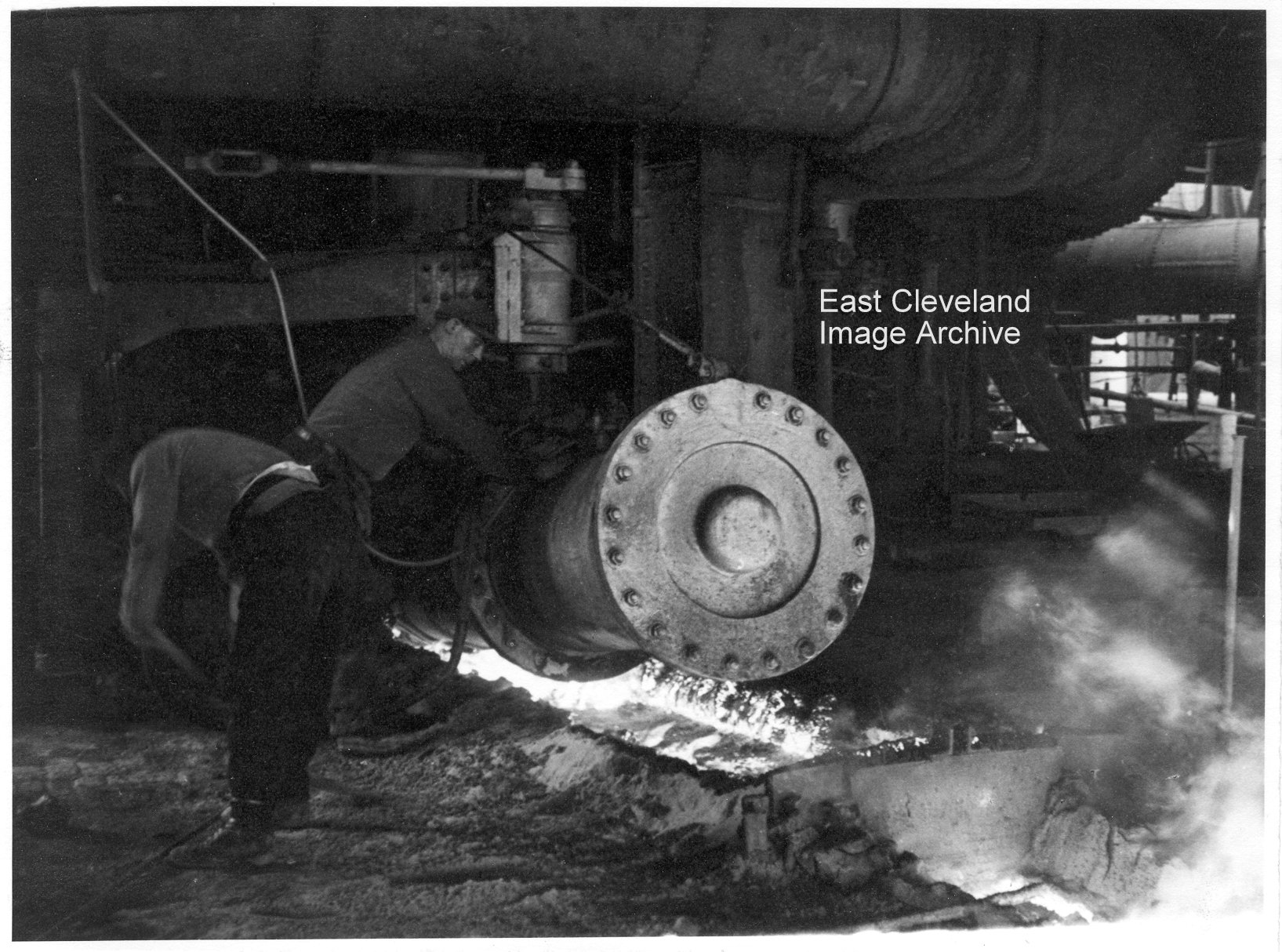
A very atmospheric shot of No. 5 blast furnace casting on Skinningrove; you can almost taste the sulphur! The ”gate” in the sand runner is to skim the slag off the iron and divert it towards the waiting slag ladles, the iron carries on straight ahead. The most dangerous time in the tapping process is when the liquid iron and slag are almost exhausted – because the system is under pressure the pressure seal can blow through the tap-hole sending slag and iron spraying in all directions, very pretty, but very dangerous!
The device which can be seen facing the camera is actually the “Clay gun”, a device for injecting clay into the taphole at the end of a cast, to stop the flow of iron. It looks like the Frontside lads are tidying up at the end of a cast. The large circular pipe above is the “Bustle main” which fed hot blast from the stoves into the furnace via the tuyeres which were spaced radially round the furnace. Latterly the Clay gun was powered by electricity, and it was the shift electricians duty to be there in case the gun failed to work, as things could get quite hairy if the gun failed to stop the taphole. The procedure was to start to bring the furnace “off blast” if the gun failed. In the meantime as a safety precaution the furnace would “Pull wind”.
Image courtesy of the Pem Holliday Collection.
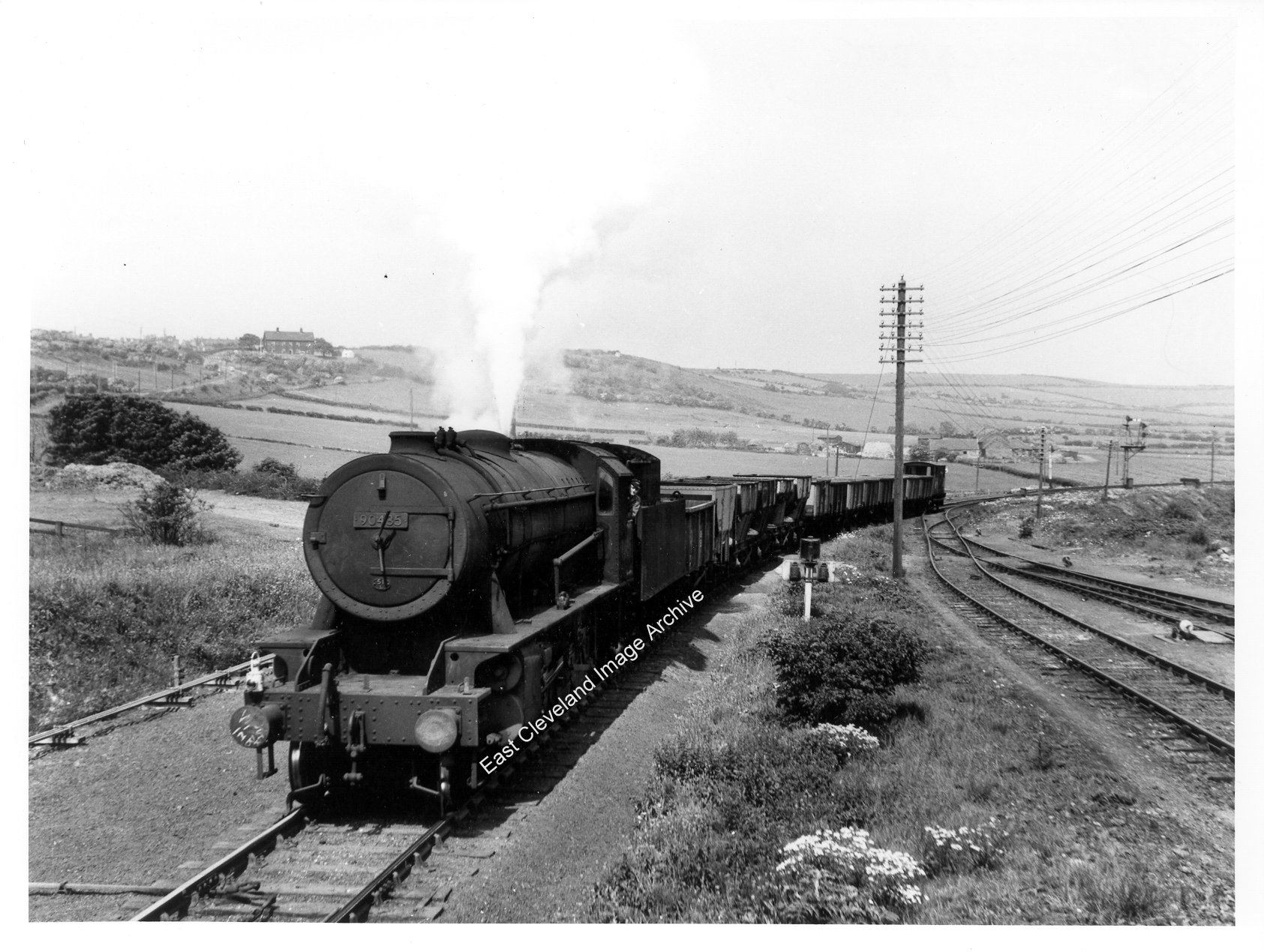
A train of empty iron-ore wagons rolls towards Skinningrove station, Brotton Cottage Hospital (Brotton Miner’s Hospital) in the background, headed by a rather grimy ’Austerity’ class WD/8 9 2-8-0 locomotive whose number is 90435. Taken in 1959 this image shows the train is not bound for Skinningrove Iron works, the reception sidings are the lines branching away on the right.
Image believed to originate from the Neville Stead Collection, but came to the Archive from the Pem Holliday Collection.
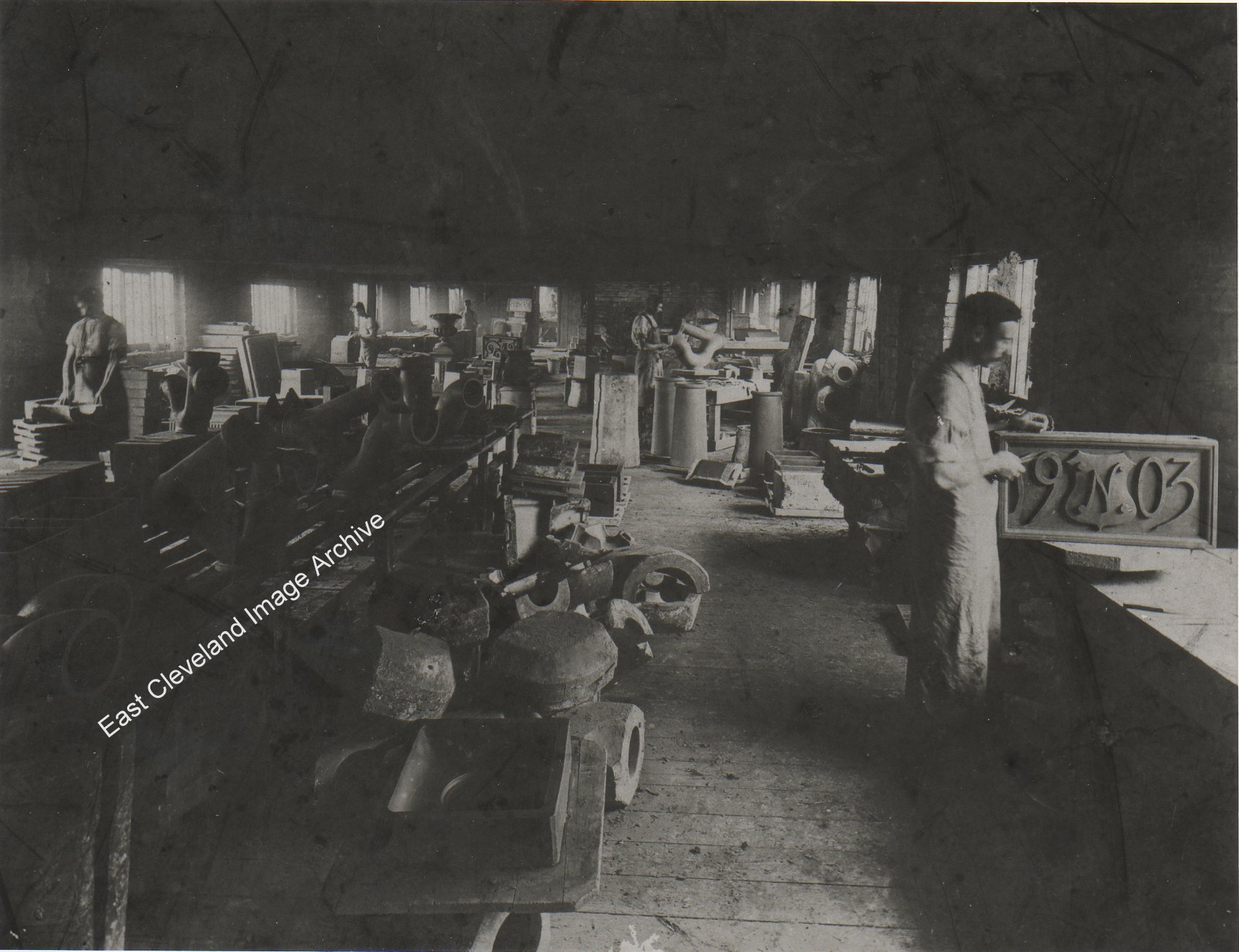
This looks like a photograph of a finishing shop – a place where clay or ceramic objects are cleaned up and checked for defects. I could suggest a date of 1903 – judging by the plaque being held to view at the nearest workbench, but that could be a red herring! We have said clay or ceramic because most of the objects in the image look like ceramic pipework, chimney pots and urns. The reason it looks rather gloomy is that it was shot in natural light – no flash. Behind the little table in the foreground can be seen some small moulds; like boxes in two halves. We have been told by Gavin Purdon: “The 1903 plaque with a letter N on its shield shown in this photograph can be seen today in Commondale village mounted on the gable end of Ness Terrace nearest to Commondale railway station. This would suggest the photograph has a strong connection with Commondale Brick Pipe & Tile Works.”
Many thanks to Gavin Purdon for that update.
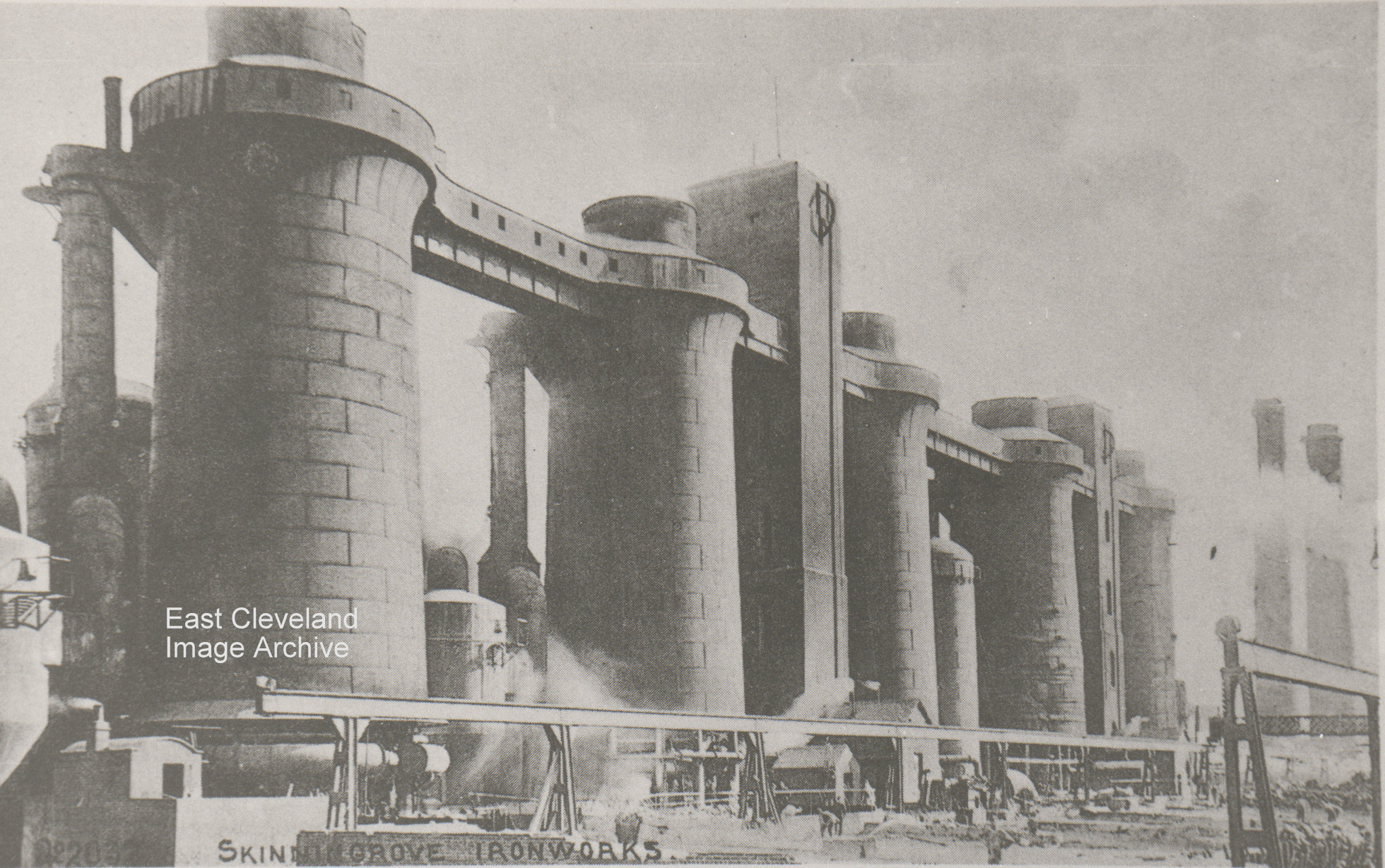
A picture postcard showing the blast furnaces and pig beds at Skinningrove Iron Works. These are the 5 original, stone-built, blast furnaces at Skinningrove Iron Works (no Steel in the title then – we are not even sure it was called Skinningrove Iron Works – at this time). The furnaces were hand-loaded with large two-wheeled barrows which ran on knife-edge iron wheels (to minimise the rolling resistance), hence the gallery connecting the furnaces to the lift housings. The iron was tapped directly into a sand gully, called a sow, which had many branches, called pigs (hence the term pig-iron), each the same size and pressed into the sand with a specially-shaped former. When sufficiently cool the pigs were loaded onto trucks and taken to the jetty, via an incline, rope-hauled, railway, and then in company steamships to steelworks and iron foundries in Durham and Middlesbrough. Eventually they were even transported to Europe. All of these stone-built furnaces were eventually demolished and new furnaces built; of which no. 3 and no. 5 survived.
Image courtesy of the Pem Holliday Collection.
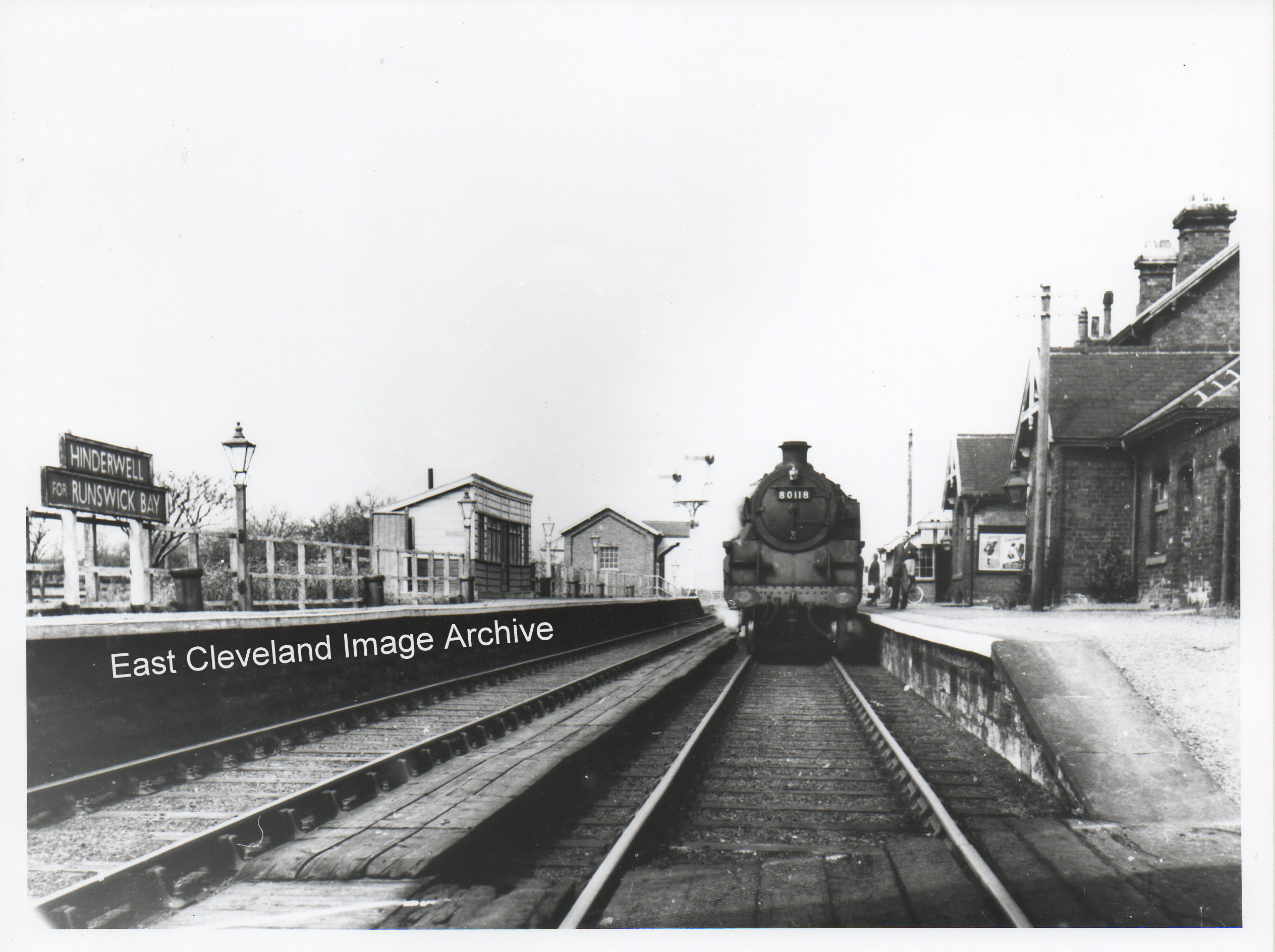
A line-level shot of a local train in Hinderwell Station. The loco is a 2-6-4 BR Standard Tank, number 80118, so this image could well be towards the end of the line’s life, certainly in the ’50s, when this class took over from A-series 4-6-2T. For the railway modellers among you this particular locomotive is available from the Bachmann stable for ’OO’ gauge, in early BR livery – probably exactly this era (sorry for the ‘anorak’ information).
Image courtesy of the Pem Holliday Collection.
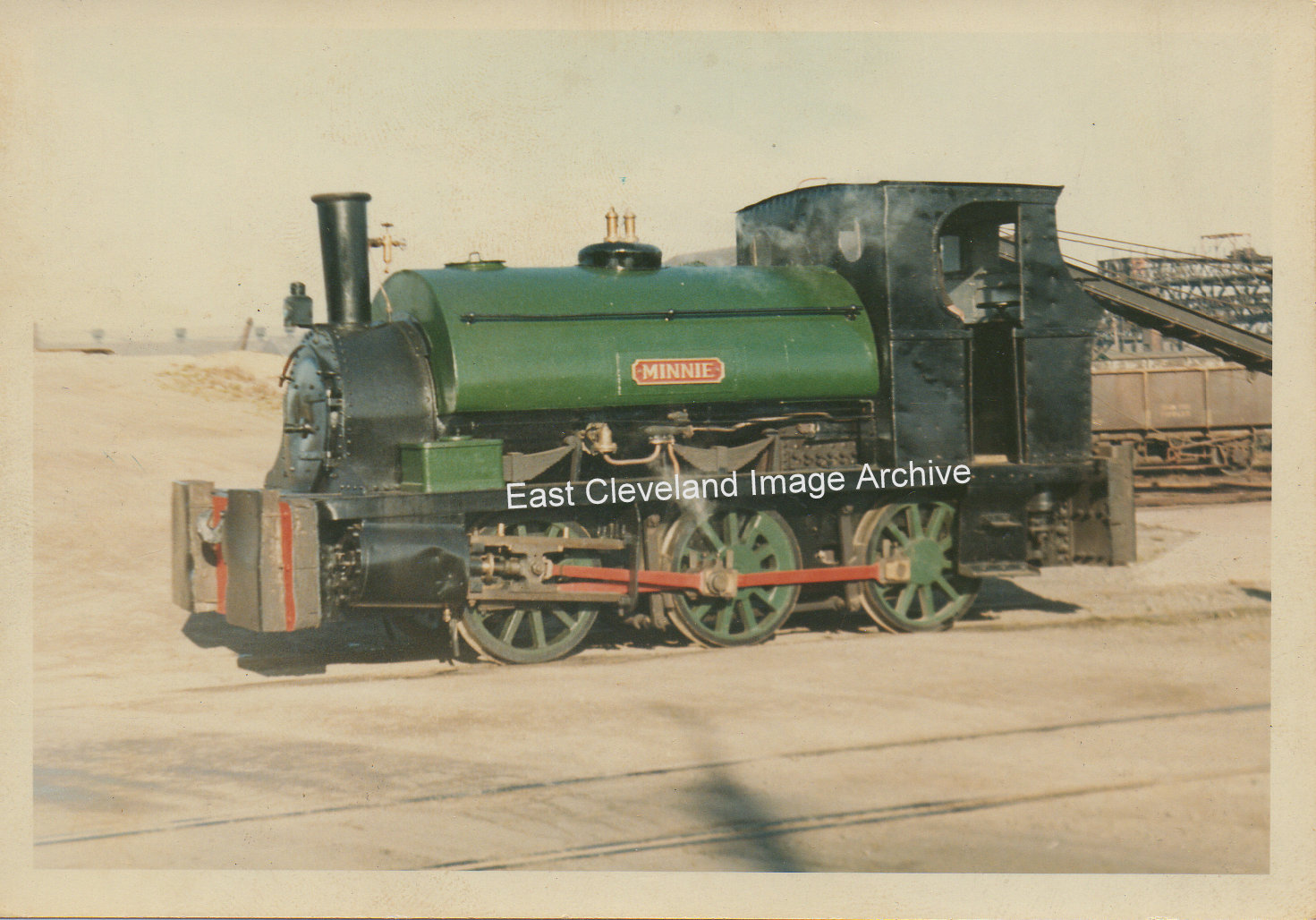
Minnie about to leave Skinningrove Iron and Steel Works at the end of her life there. Notice the changes in her appearance; dumb buffers replaced the sprung buffers so making it easier to push shunt the slag pots, iron ladles and ingot bogies; a full crew cab (obviously taken from another redundant locomotive) and different safety valve arrangement, she had obviously had a refit during her long life on ”the ’Grove”.
Image courtesy of the Pem Holiday Collection.
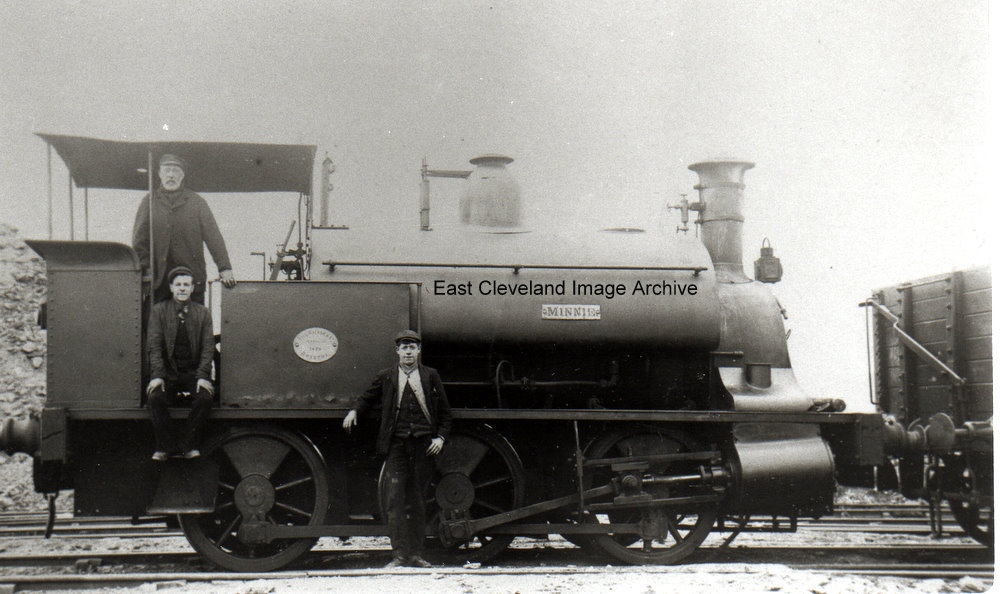
Minnie at the beginning of her career at Skinningrove, canvas roof over the crew quarters, sprung buffers and very Victorian safety valve. A good example of industrial photography. Driver is now identified as Thomas Baldwin (standing in front of Minnie). Minnie a 0-6-0ST locomotive was built by Fox Walker of Bristol in 1878, her original engine number was 358. Minnie can still be seen at the Mangapps Railway Museum in Essex.
Image courtesy fo the Pem Holliday Collection and thanks to Violet Shaw (nee Baldwin) for this information about her father.
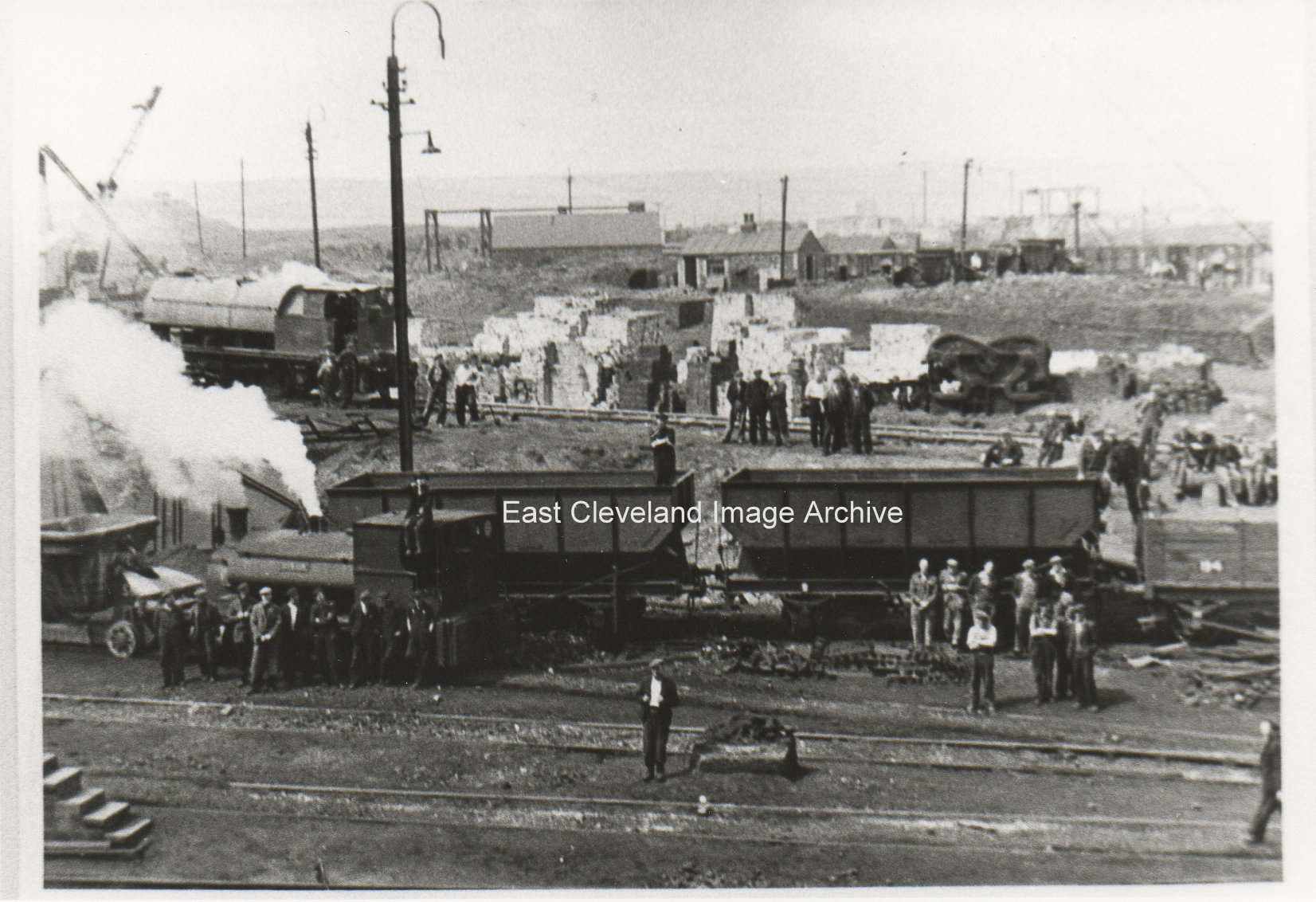
This must have ben a pretty important day, judging by the number of people standing around and the obviously posed nature of the image. Eric Johnson tells us: ”That it was possibly the blowing in of the new no. 5 Blast Furnace in 1950.
Image courtesy of the Pem Holliday Collection, also thanks to Eric Johnson for the update.
|
|










Recent Comments